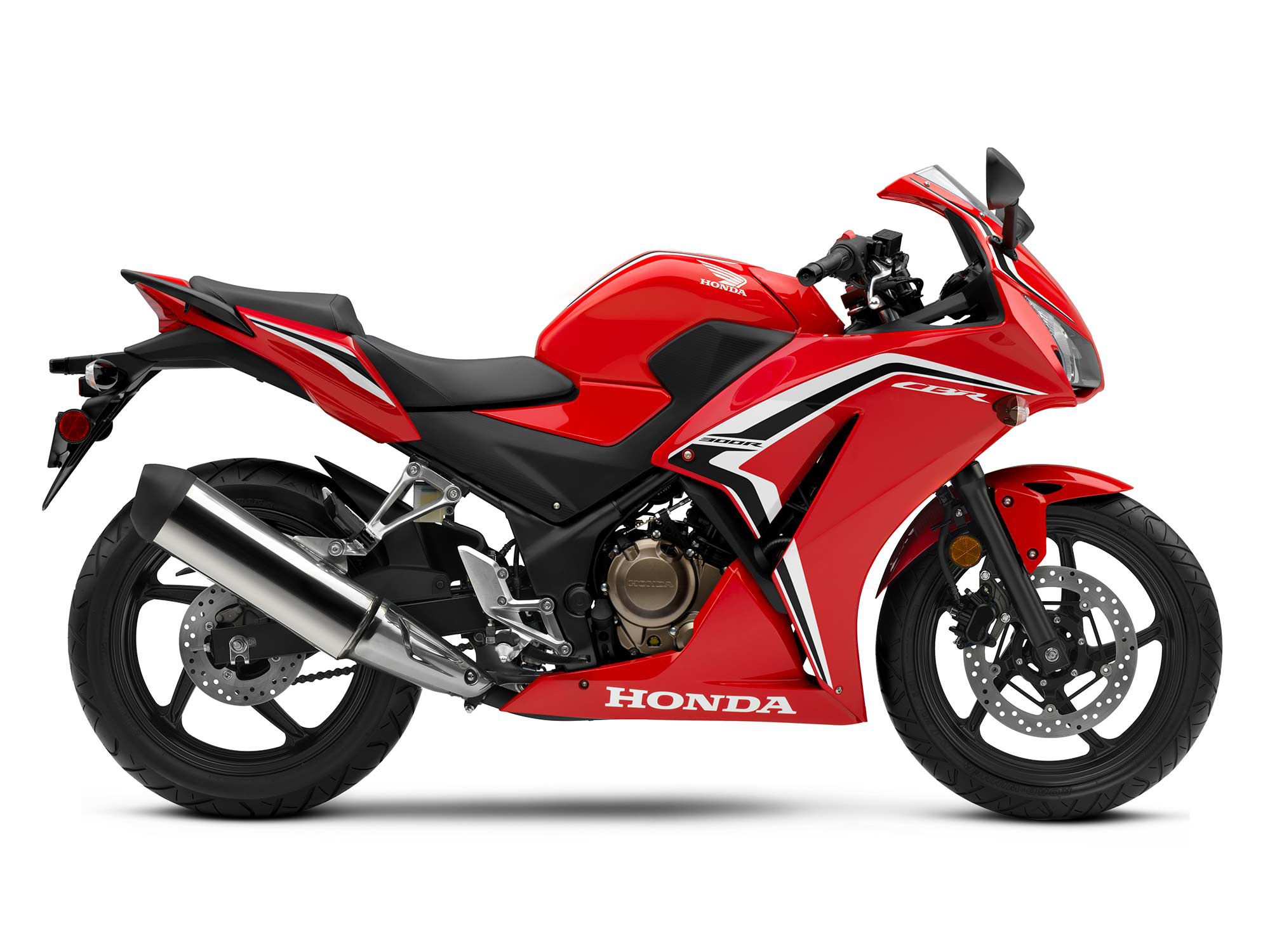
Ups
- Low seat height
- Light clutch action
- Lower price and cost of ownership compared to a majority of its competitors
Downs
- Larger-displacement competition leaving the CBR300R behind
- Limited technological advancements compared to competition
Verdict
The CBR300R is a great option for those tipping their toes into the sportbike world. While competitors like the Kawasaki Ninja 400 and KTM RC 390 put greater emphasis on performance, and might be better options for track days or sporty canyon riding, the CBR300R is a great lightweight sportbike option for the casual commuter.
Overview
The CBR300R is Honda’s smallest sportbike. It’s equipped with a modestly designed single-cylinder engine that prioritizes low to midrange torque and sips fuel for efficient commuting. A low seat height, low cost of ownership, light clutch action, and safety features like optional ABS make it great for riders who are just starting out.
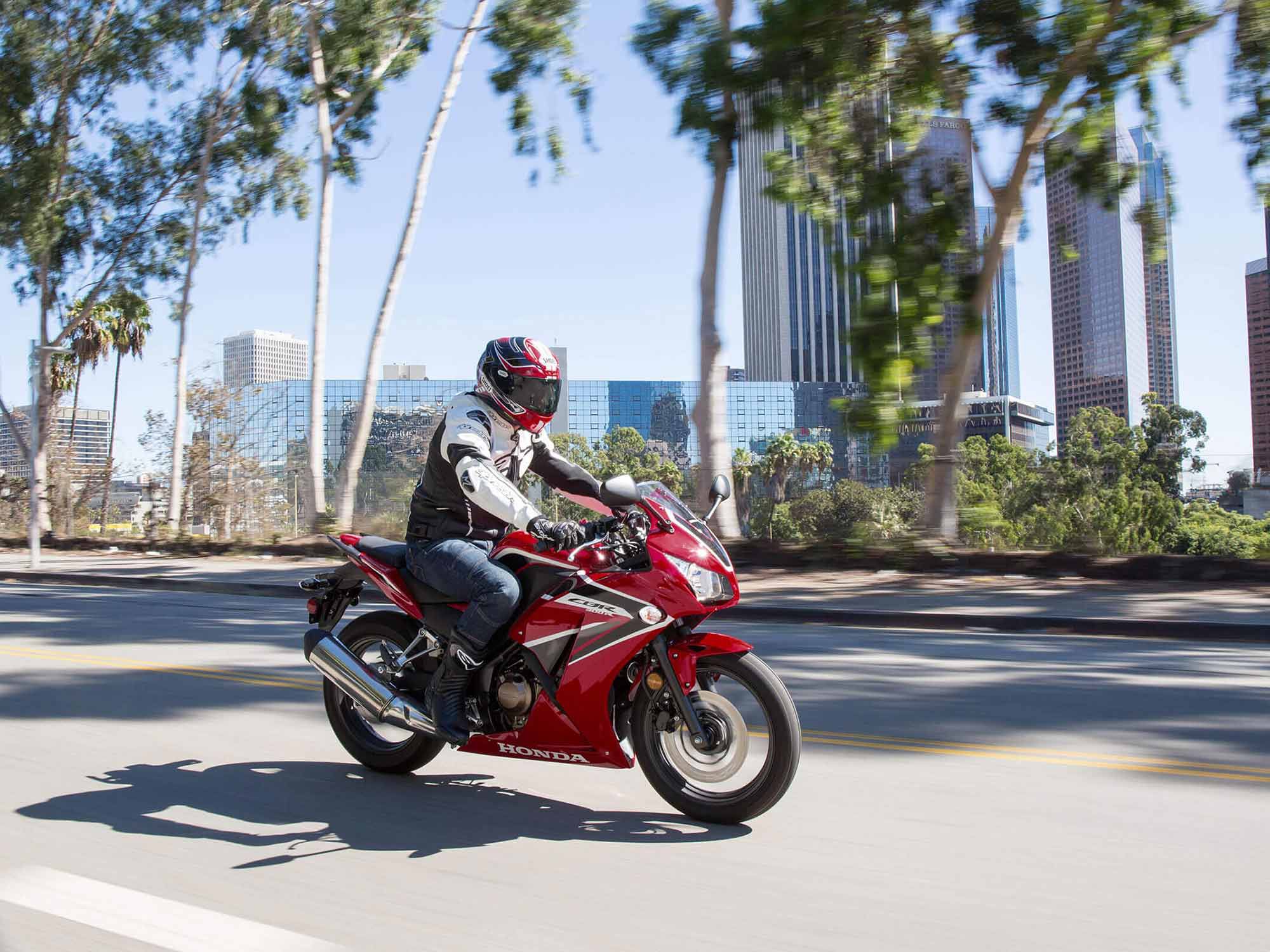
Updates for 2022
There are no changes to the 2022 CBR300R. There is, however, a $100 bump up in price.
Pricing and Variants
Two trims of the CBR300R are available, one with ABS ($5,099) and one without ($4,899).
Both models come in identical colorways as before: Grand Prix Red and Matte Gray Metallic.
Competition
The small-displacement sportbike category has a good spread of fully faired competitors including the Yamaha R3 ($5,499), Kawasaki Ninja 400 ($5,299), Suzuki GSX250R ($4,999), and KTM RC 390 ($5,799). If BMW’s G 310 RR comes to the US, that will be part of the competition as well.
There are naked variants of each manufacturer’s small-displacement model, Honda’s example being the slightly more stylish CB300R.
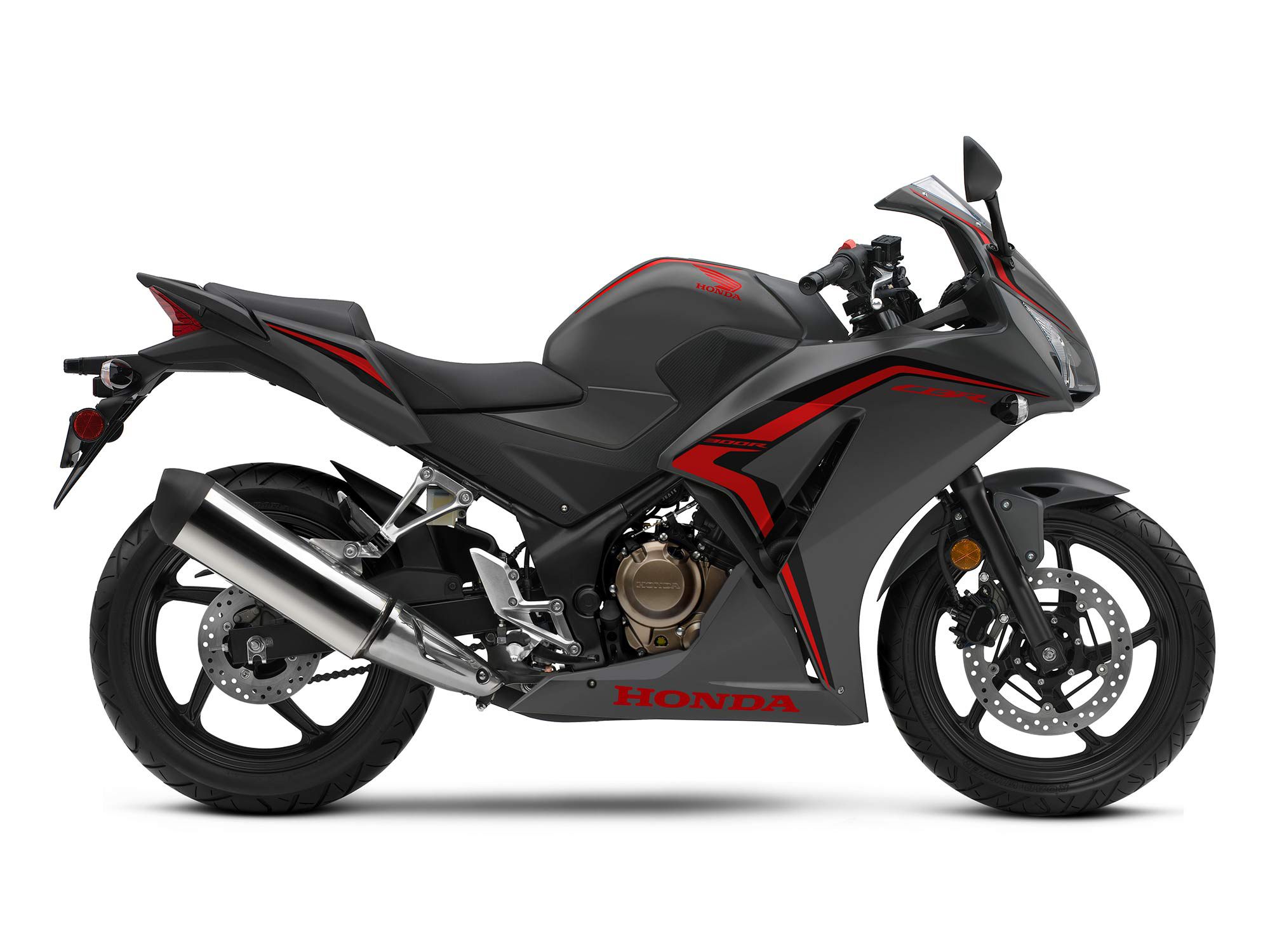
Powertrain: Engine, Transmission, and Performance
The CBR300R is powered by a 286cc liquid-cooled single-cylinder engine with a smooth and predictable power delivery that makes it great for new riders. An added benefit is the lightweight clutch pull, which removes some of the stress that comes with leaving stoplights in busy city traffic. A counter balancer limits engine vibration, though some buzz is felt at freeway speeds. In past testing we saw the Honda hit 7,500 rpm at 70 mph, with 3,000 rpm left until redline. Even still, you’ll notice that there isn’t a lot of power to help you accelerate away from traffic when cruising at freeway speeds.
When we last ran the CBR300R head to head with competitors from Kawasaki, KTM, and Yamaha it produced 27.7 horsepower at 8,390 rpm and 18.6 lb.ft. at 6,730 rpm while running a 15.15 second quarter-mile. That time was the slowest of the group and highlights the more modest engine performance compared to the competition. It makes sense that the RC 390, with its higher displacement, took the win there. What we did garner from that comparison though is the power delivery is “parental approved” and that the bike is arguably the most beginner friendly because of it.
Handling
Honda has been building beginner-friendly motorcycles for decades and understands the importance of a stable, well-balanced chassis that gives new riders the confidence to hit the road. That continues to be the goal with the CBR300R, which aims to offer predictable handling in a lightweight package that’s ideal for cutting through busy city streets and even the occasional trip along nearby canyon roads.
A 54.3-inch wheelbase and 364 pounds (with ABS) curb weight would suggest the CBR300R is lightweight and easy to tip into corners, its narrow tires (110/70-17 and 140/70-17) further contributing to its responsive handling.
Suspension consists of a 37mm fork and Pro-Link single shock. Frame is a tubular steel design. As a whole, the chassis provides a comfortable ride that is still firm enough to keep everything under control in all but the most reckless paces on the street.
Brakes
Predictable, new-rider-friendly performance is once again the name of the game when it comes to the CBR’s brakes. Stopping is done with a single brake disc at the front and rear, in 296mm and 220mm sizes respectively.
While the initial bite is mild (a benefit for those getting accustomed to stopping a motorcycle), stopping power progresses at a linear pace. There’s also a small CBR equipped with ABS (anti-lock braking system) to help new riders with controlled stops in poor conditions.
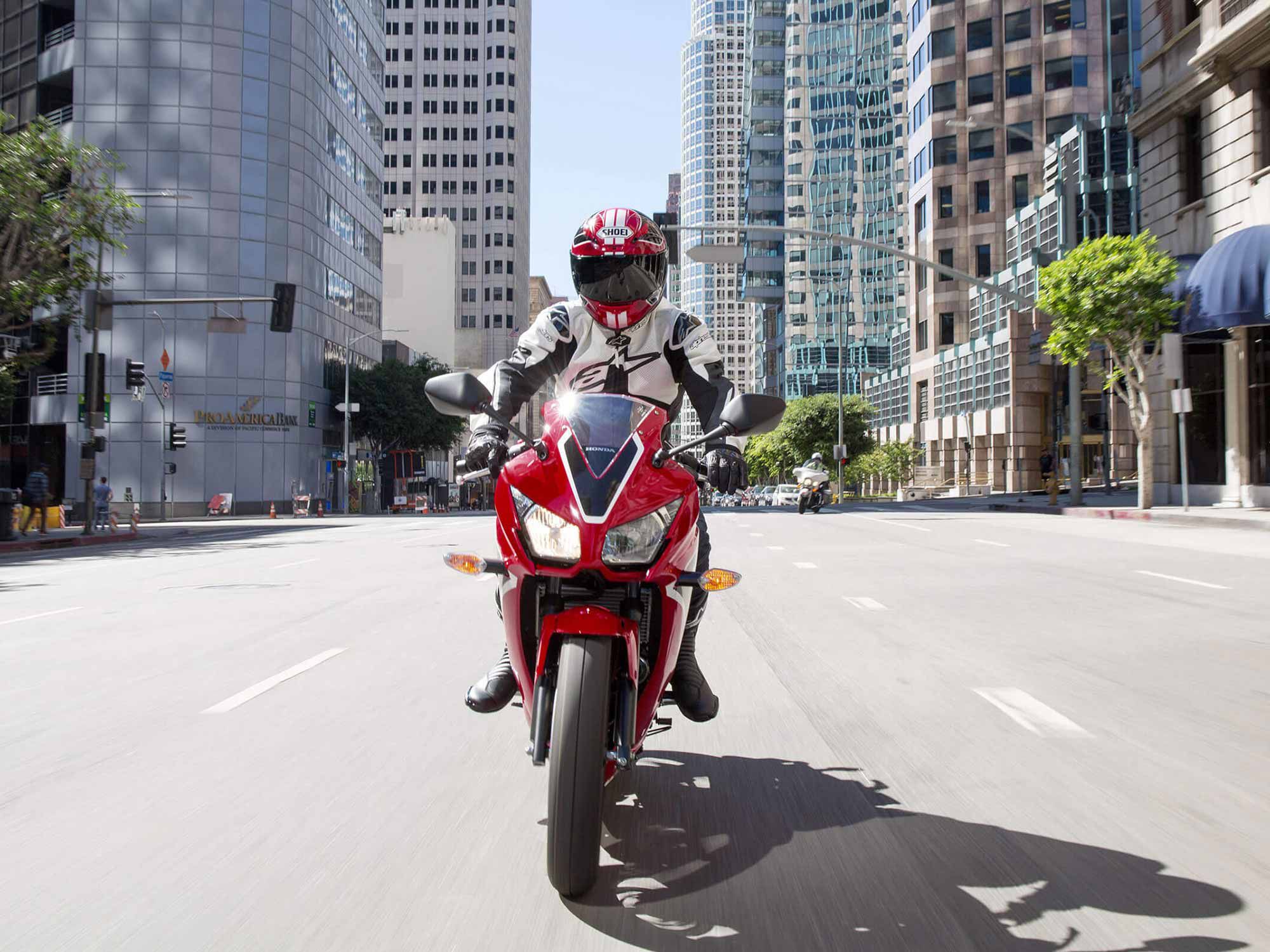
Fuel Economy and Real-World MPG
The CBR300R is a conservative fuel sipper; our testing recorded 60 mpg.
Ergonomics: Comfort and Utility
The low 30.7 inch seat means most riders will confidently set their feet on the ground at stops. The riding position isn’t as committed as Honda’s track-bound CBR supersport bikes, either; the CBR300R’s natural, neutral riding position is plenty comfortable for the average commute.
Electronics
A combination of analog and digital instrumentation provide the vital stats. Although somewhat simplistic, the speedometer, fuel gauge, coolant temp, tripmeter, odometer, and clock are digitally displayed; the tachometer is analog.
Dual headlights, electronic fuel injection, a computer-controlled digital transistorized ignition, and optional ABS are other electronic-related features.
Compare this to models like the KTM RC 390, which comes with a TFT display, cornering ABS, and lean-sensitive traction control, and you can see that the CBR300R has fallen slightly behind the competition in terms of features.
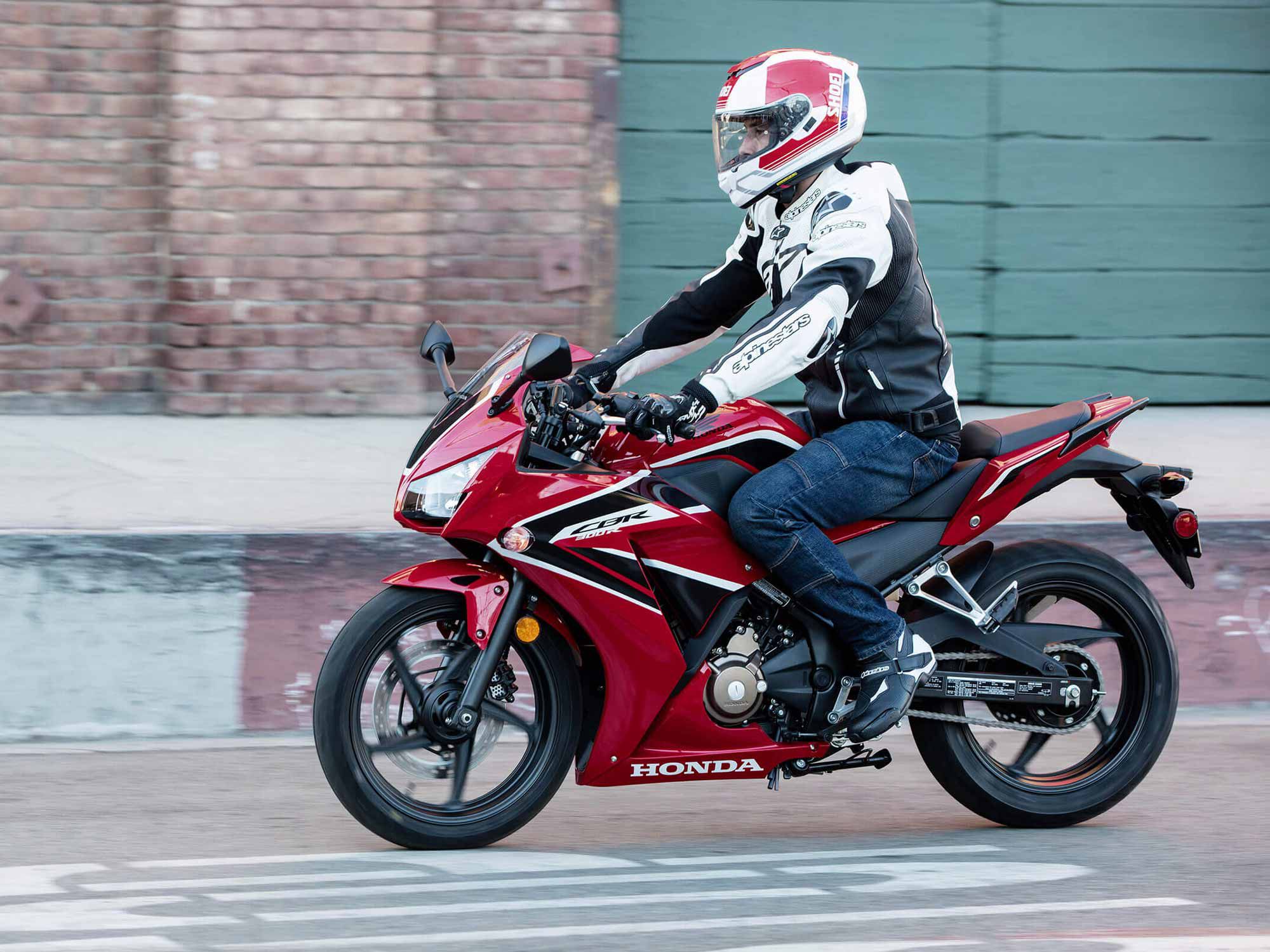
Warranty and Maintenance Coverage
A one-year transferable unlimited-mileage warranty and possible extension with the Honda Protection Plan is par for the course.
Quality
The overall silhouette of the CBR300R is tidy and sharp. Honda’s good ol’ reliability has its back as well.
2022 Honda CBR300R Claimed Specifications
| MSRP: | $4,899/$5,099 (ABS) |
|---|---|
| Engine: | 286cc, DOHC, liquid-cooled single-cylinder; 4 valves/cyl. |
| Bore x Stroke: | 76.0 x 63.0mm |
| Transmission/Final Drive: | 6-speed/chain |
| Cycle World Measured Horsepower: | 27.7 hp @ 8,390 rpm |
| Cycle World Measured Torque: | 18.6 lb.-ft. @ 6,730 rpm |
| Fuel Delivery: | PGM-FI fuel injection w/ 38mm throttle body |
| Clutch: | Wet, multiplate |
| Engine Management/Ignition: | Computer-controlled digital transistorized w/ electronic advance |
| Frame: | Tubular steel |
| Front Suspension: | 37mm telescopic fork; 4.7 in. travel |
| Rear Suspension: | Pro-Link shock, preload adjustable; 4.1 in. travel |
| Front Brake: | Single hydraulic caliper, 296mm disc (w/ optional ABS) |
| Rear Brake: | Single hydraulic caliper, 220mm disc (w/ optional ABS) |
| Wheels, Front/Rear: | 17 in. / 17 in. |
| Tires, Front/Rear: | 110/70-17 / 140/70-17 |
| Rake/Trail: | 25.3°/3.9 in. |
| Wheelbase: | 54.3 in. |
| Ground Clearance: | N/A in. |
| Seat Height: | 30.7 in. |
| Fuel Capacity: | 3.4 gal. |
| Claimed Wet Weight: | 357 lb./364 lb. (ABS) |
| Contact: | powersports.honda.com |
Source: MotorCyclistOnline.com
